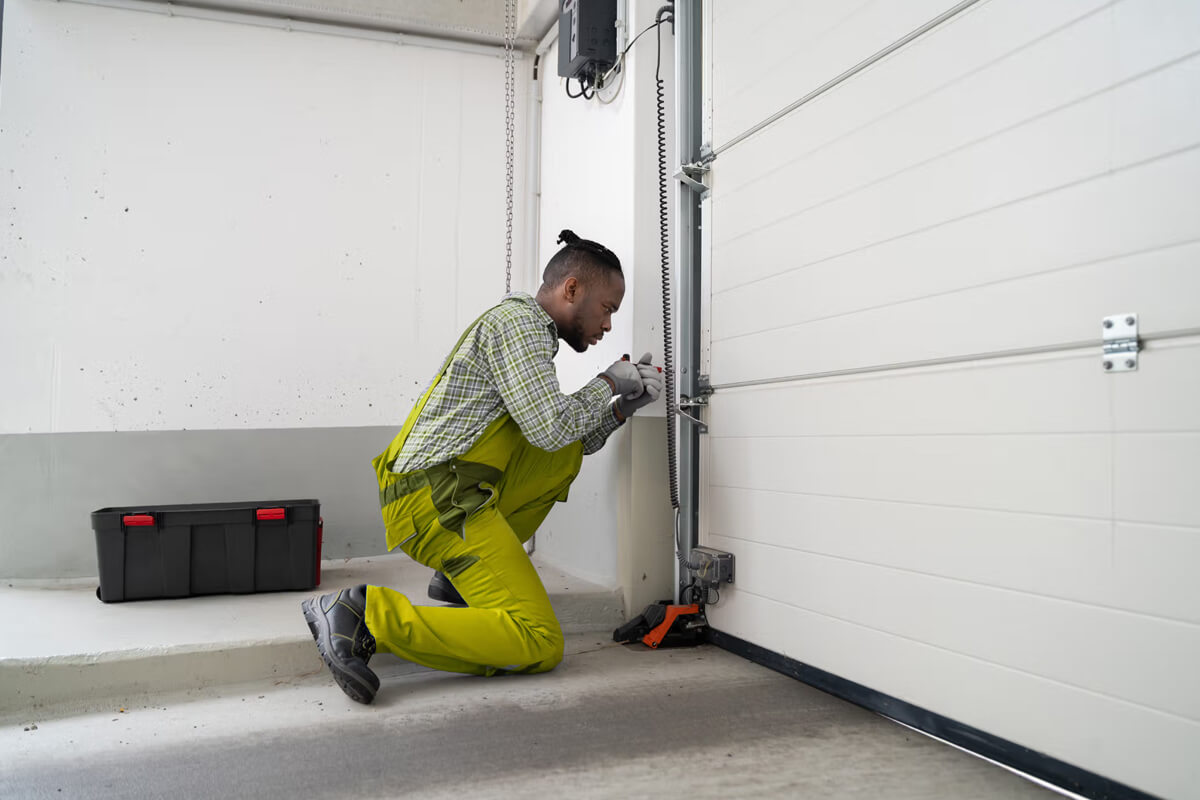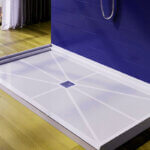Maintain your garage door by performing twice-yearly inspections and basic upkeep tasks like lubrication, safety testing, and cleaning. Regular maintenance keeps your door quiet, prevents costly repairs, and ensures safe operation. The key is checking moving parts, testing safety sensors, and addressing small issues before they become major problems.
- How Often to Inspect and Test Your Garage Door
- Cleaning and Testing Door Photo Sensors
- Lubricating and Tightening Hardware Effectively
- Checking Balance, Auto-Reverse, Chain and Belt Tension
- Servicing Weather-stripping and Insulation for Energy Savings
- Replacing Batteries, Remotes and Light Bulbs Safely
- Seasonal and Climate-Aware Maintenance Tips
How Often to Inspect and Test Your Garage Door
Check your garage door’s performance every six months, with brief monthly safety tests. Most garage doors cycle over 1,000 times yearly, creating significant wear on components. Preventative maintenance represents the modern approach to home care, contrasting with older reactive repair methods.
Watch and listen as your door operates—it should move smoothly without jerky motions or unusual grinding sounds. Look for symmetrical movement on both sides and check if panels appear aligned. A properly maintained garage door provides convenience and security, but a neglected door can become noisy and pose safety risks. Monthly photo sensor tests take just minutes but prevent accidents. Notice changes like slower operation, increased noise, or visible wear on hardware components like hinges and rollers.
Cleaning and Testing Door Photo Sensors
Photo sensors prevent garage doors from closing when objects block their path, making monthly testing essential for family safety and accident prevention.
Test sensors by activating the garage door, then waving an object across the sensor path as it closes—the door should immediately reverse. Try this at three different points along the beam. Clean sensors with a soft cloth if they appear dusty or misaligned. When sensors are misaligned, one unit usually blinks or turns off. Properly aligned sensors should show steady lights on both sides. Garage door openers over 20 years old may lack these safety features and need upgrading to modern systems with advanced security integration.
Lubricating and Tightening Hardware Effectively
Apply white lithium grease to moving parts twice yearly to reduce friction and prevent metal-on-metal wear that shortens component lifespan. This service routine prevents mechanical deterioration.
White petroleum garage door grease is the standard lubricant for metal parts because it preserves component integrity and has weather-resistance capabilities. Focus on hinges, rollers, springs, and the opener’s chain or screw drive. Lubricate annually with white lithium grease—spray versions are available at home centers and make operation smoother and quieter. Check all roller brackets, bolts, and fasteners for looseness. The average garage door moves up and down more than 1,000 times yearly, creating vibration that can loosen hardware. Use a socket wrench to tighten loose bolts on moving parts.
Essential Lubrication Points
Target these specific door components during your maintenance routine. Lubricate springs by applying full surface coverage, hinges to prevent panel folding issues, and roller bearings where the shaft meets the wheel. Never lubricate tracks—this attracts dirt and reduces roller traction. Apply lubricant to moving parts, cycle the door several times to distribute it, then reconnect the opener. Modern smart garage door systems can now provide predictive maintenance alerts based on sensor data and operational analytics.
Checking Balance, Auto-Reverse, Chain and Belt Tension
Test your door’s balance and auto-reverse features to ensure safe operation and prevent opener strain that leads to premature failure. Balance testing represents a critical safety inspection procedure.
Disconnect the opener by pulling the release handle, lift the door halfway, then release—it should remain in place without slipping down. An unbalanced door indicates worn springs that need professional attention. For auto-reverse testing, place a 1.5-inch block on the floor under the door’s path—when closing, the door should reverse within two seconds after striking the block. Check chain or belt tension by opening the door midway, disengaging the carriage, and manually closing the door. Adjust tension using the turnbuckle until chain or belt sits 1/4 inch from the rail bottom. Never attempt spring adjustments yourself—call professionals for spring repairs. Modern garage doors may include red-painted bolts indicating components requiring professional service only.
Servicing Weather-stripping and Insulation for Energy Savings
Replace worn weather-stripping to keep out drafts, moisture, and pests while improving your garage’s energy efficiency. Weather sealing provides thermal protection for attached garages.
The rubber weather-stripping keeps out cold, water, and debris—if torn or badly worn, replace it immediately. Check the bottom seal and side strips for cracks, brittleness, or gaps. Choose weather-strip width that best fits your situation—use larger seals to fill wider gaps between door and floor. For steel doors, the U-shaped astragal slides into grooves, while wood doors typically use nailed weather-strip. Proper sealing reduces energy costs by preventing air transfer between garage and outdoor temperatures. Consider insulation upgrades if your garage connects to living spaces, as insulated garage doors with advanced thermal barriers improve temperature control and reduce heating and cooling expenses significantly.
Replacing Batteries, Remotes and Light Bulbs Safely
Keep spare batteries and bulbs on hand to avoid being locked out during power outages or equipment failures. Battery maintenance ensures reliable access control.
Test backup battery function by unplugging the opener and trying to operate the door with the remote or wall button. Replace batteries in remotes annually or when response becomes sluggish. Change garage door opener bulbs with appropriate wattage bulbs recommended by your opener manufacturer. Unplug the automatic opener before performing any maintenance tasks. Store replacement items in your garage for quick access. Modern smart garage door openers include Wi-Fi connectivity, smartphone apps, and integration with home automation systems like myQ that alert you to battery status and maintenance needs.
Seasonal and Climate-Aware Maintenance Tips
Adjust your maintenance schedule based on local climate conditions, as extreme temperatures and weather affect garage door performance differently. Seasonal care addresses environmental factors.
If you live near the coast or in extreme weather conditions—very cold, hot, or humid—inspect more frequently to ensure parts aren’t rusting or drying out. Hot summers can affect weatherstrip flexibility and spring tension, while cold winters may require more frequent lubrication. Coastal areas need additional rust protection due to salt air exposure. Clean steel doors by sanding rust spots, then priming and painting—wash other door materials with appropriate cleaners and rinse thoroughly. Schedule preventive maintenance before severe weather seasons to catch potential problems early. Modern climate considerations include preparing for temperature extremes and seasonal debris that affect both traditional and smart garage door systems.
Regular garage door maintenance saves money and prevents safety hazards. Focus on these five key practices: test safety features monthly, lubricate moving parts twice yearly with white lithium grease, inspect weatherstripping seasonally, check door balance and auto-reverse functions, and replace batteries before they fail. Professional service becomes necessary for spring adjustments, extensive repairs, or when basic maintenance doesn’t resolve performance issues. The future of garage door maintenance includes predictive analytics and smart monitoring systems that can identify potential issues before they become costly repairs.





